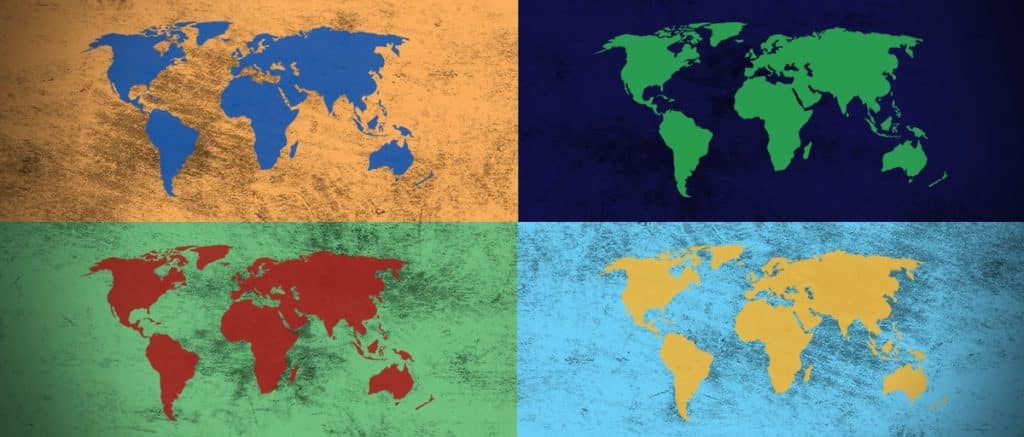
The world has entered uncharted waters as changes forecast over the next decade could have more impact than the collapse of the Berlin Wall in 1989.
Just think of the past 15 years. COVID-19 struck as the world was recovering from the 2008/9 financial crisis. When the pandemic started easing, Russia invaded Ukraine and upended energy security in Europe and food security in Africa. Africa now faces a hunger and fertiliser emergency on top of a debt crisis.
The result is widespread instability and a general decline in democracy, including a rash of coups in West and Central Africa. Africa isn’t worse off than other regions, though. Western Europe and the United States (US) are engaged in a proxy war with Russia, their former Cold War adversary. The North Atlantic Treaty Organization (NATO) recently added China to its perceived threat environment, and China and the US are at odds over Taiwan.
But Africa is rapidly emerging as a battlefield between China, the US and the European Union (EU) that could make the bipolar era of competition between East and West look tame by comparison. All of this is happening while the impact of climate change accelerates year on year.
Africa is rapidly emerging as a battlefield between China, the US and the European Union
To explore the impact of the different worlds that could emerge from these upheavals, the African Futures and Innovation programme at the Institute for Security Studies is undertaking a wide-ranging assessment of alternative futures. Two dimensions frame the possible futures: the extent of international cooperation/fracturing and the pursuit of more or less sustainability.
The results are four broad scenarios: a Sustainable World, a Divided World, a World at War and a Growth World. The impact is modelled using the International Futures forecasting platform from the University of Denver, and is currently being presented for discussion and validation in a series of public events.
On the current trajectory, the Divided World scenario appears most likely. This would see a more fragmented global order and the retreat from a rules-based system over time. Powerful countries including the US and China, alternate between efforts to frame a favourable global agenda and isolationism. The likelihood of this scenario will accelerate if Donald Trump is re-elected as US president in 2024, to the detriment of the West and ultimately, itself.
In a world where the US and EU don’t act as one, China could overtake the EU in power potential in 2027 and the US in 2031. On this trajectory, the steady loss in legitimacy, influence and salience of the United Nations proceeds apace, and Africa suffers. Peacekeeping and support for peacemaking in Africa decline.
If the US and EU don’t act as one, China could overtake the EU in power potential in 2027 and the US in 2031
Hard power competition dominates in the World at War scenario. Three triggers could realise this scenario. The first is the escalation of Russia’s war on Ukraine into a broader military confrontation with NATO. Or China could invade Taiwan with military intervention from the US and others.A third trigger – less likely given the large disparities in their material power capabilities – could be border conflict and eventually a war between India and China. Although India will continue to have significantly fewer power capabilities than China, the two are increasingly regional and global power competitors that share a long border. The rivalry between Chinese-supported, nuclear-armed Pakistan and India over Kashmir could be a trigger, particularly if the two look to balance their relations with Washington and Beijing.In the World at War scenario, Russia and China enter into a formal military alliance in direct opposition to NATO. Others eventually join the China-Russia treaty, including Iran, which has a long-standing aggrievement with the West.Africa becomes a key area of competition for control of its strategic mineral resources in the World at War scenario. China has been a first mover in securing a supply of the minerals required for the transition to a renewables-based future, including lithium, nickel, cobalt, manganese and palladium. Now the West aggressively plays catch-up.The most difficult scenario to achieve is the only one in which Africa achieves its Agenda 2063 goalsNeoliberal, trickle-down economics characterise the Growth World, with little care for the environment. This high-growth, unequal world would see slow reductions in extreme poverty. Efforts to introduce minimum tax rates for corporates don’t get off the ground. Large digital companies, particularly from the US, continue to increase their profits without a physical presence in the countries where they operate.The practice of tax avoidance through profit shifting to low-tax jurisdictions effectively leads to a race to the bottom as countries compete to attract foreign direct investment. Developing countries suffer, and the licit and illicit financial outflows from Africa’s 46 low- and lower-middle-income countries accelerate.The Sustainable World scenario is the most difficult to achieve. Unlike the other three paths, it requires deliberate choices and bold leadership to achieve a better world against inevitable domestic resistance. In this scenario, the international community balances growth and distribution by reducing overall consumption and constraining greenhouse gas emissions. Collaboration and norm development extends across multiple sectors.The Sustainable World is the only forecast in which Africa achieves its Agenda 2063 ambitions for an integrated, prosperous and peaceful continent.Three developments could unlock this sustainable future. The first is democratisation in China and Russia, as unlikely as that may seem. The second is a global push to reverse the corrosion of the rules-based system through a determined process of democratisation and structural evolution. Third, a reluctant world community is forced into a collective response due to the rapid acceleration of the impact of climate change and global pandemics.These scenarios are being tested and refined with global experts. The workshops and their outcomes can be viewed on the African Futures and Innovation website which was launched earlier this year and forecasts Africa’s future two decades into the future.




